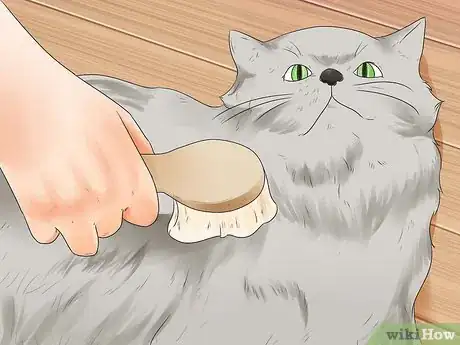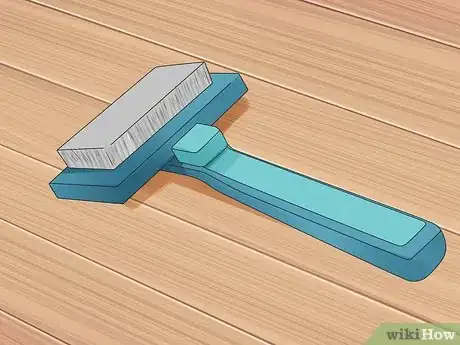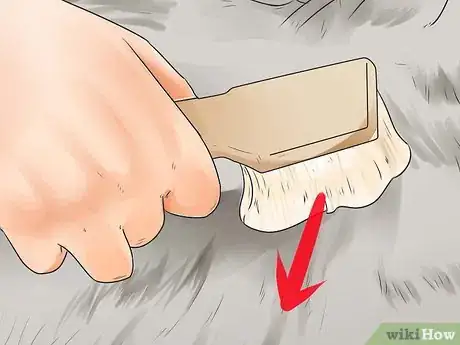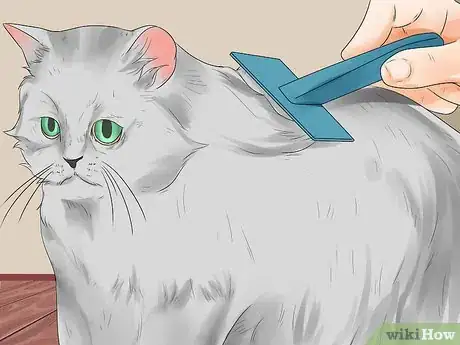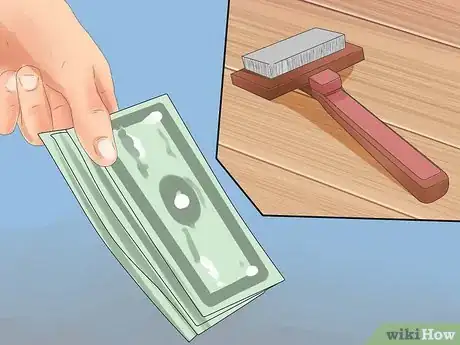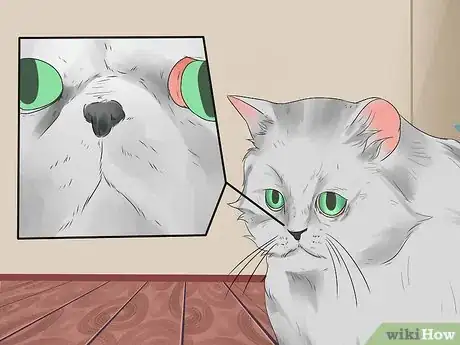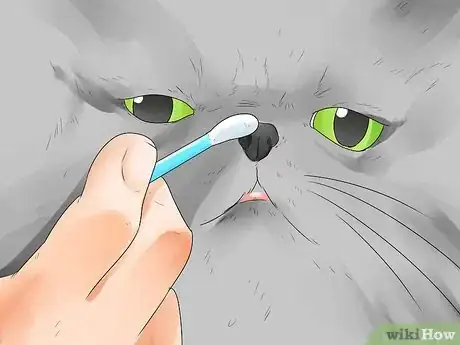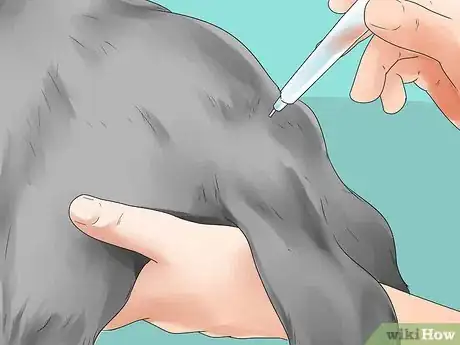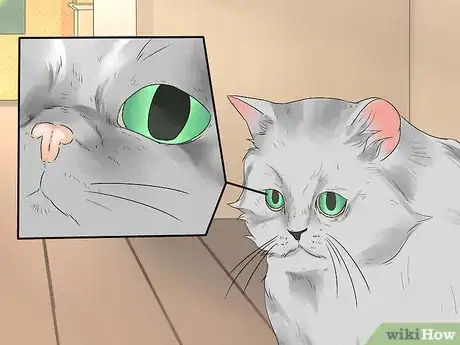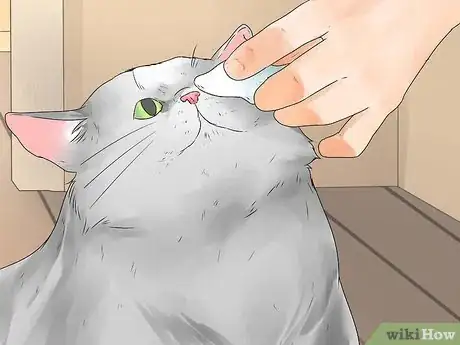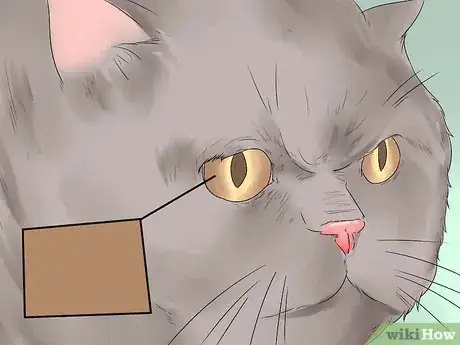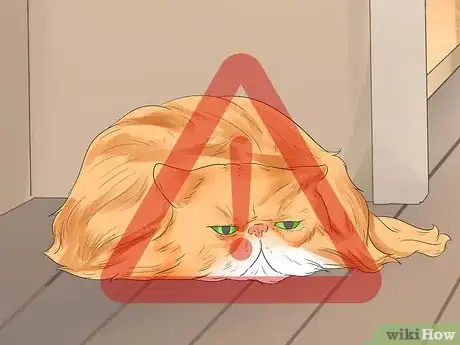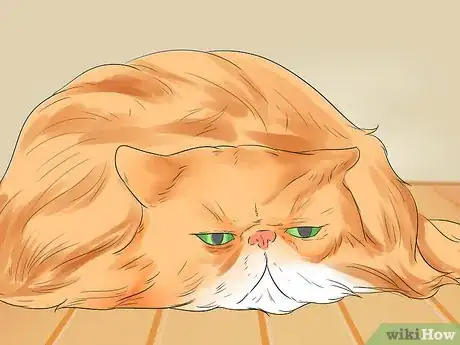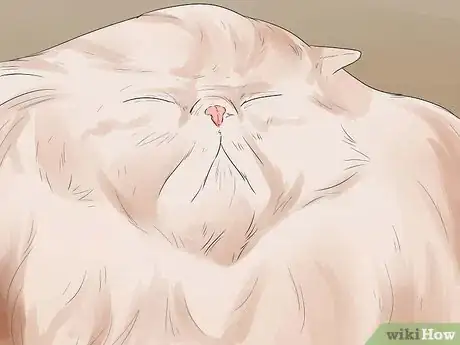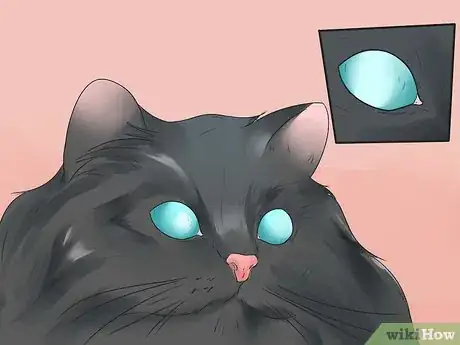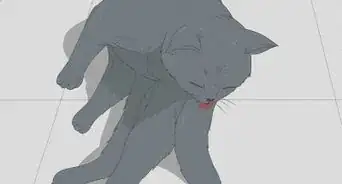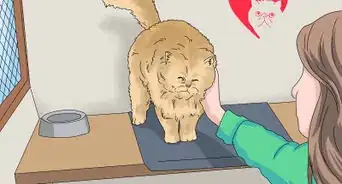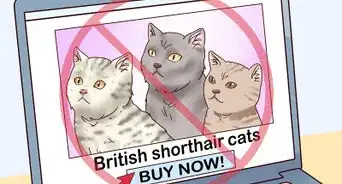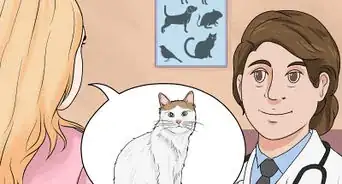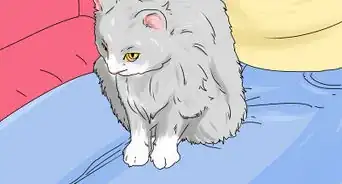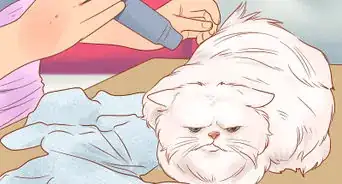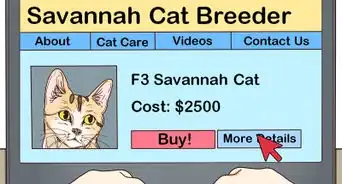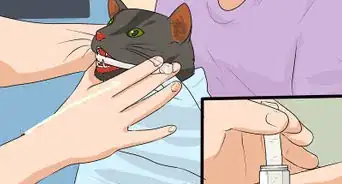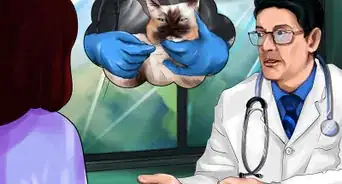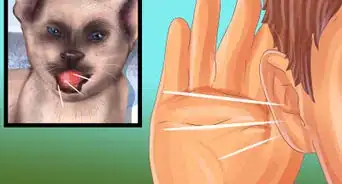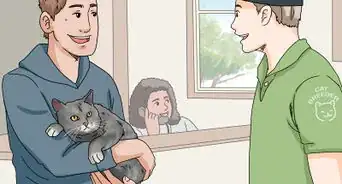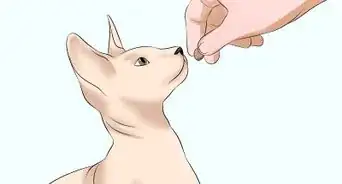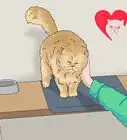This article was co-authored by Melissa Nelson, DVM, PhD. Dr. Nelson is a Veterinarian who specializes in Companion and Large Animal Medicine in Minnesota, where she has over 18 years of experience as a veterinarian in a rural clinic. She received her Doctor of Veterinary Medicine from the University of Minnesota in 1998.
There are 7 references cited in this article, which can be found at the bottom of the page.
wikiHow marks an article as reader-approved once it receives enough positive feedback. In this case, several readers have written to tell us that this article was helpful to them, earning it our reader-approved status.
This article has been viewed 125,021 times.
With their doll-like faces and large eyes, gentle disposition and amiable personalities, Persian cats are a popular breed to own. Like with all pets, having a Persian cat as a companion comes with its own set of responsibilities. From coat care to health issues, there are many things to consider when caring for a Persian cat.
Steps
Caring for Your Cat’s Coat
-
1Start brushing your cat’s fur at an young age. To make sure that your Persian accepts being brushed a lot, you will have to start brushing him/her at an early age. From day one, make a point of brushing your kitten so that she gets used to this experience. If you don't start brushing him/her at an early age, (s)he may develop a dislike for being brushed that can ultimately make it much harder to maintain his/her coat.
- One way to help your cat accept being brushed is to brush his/her right before a mealtime. That way, your cat will associate getting brushed with getting food (which is something that (s)he enjoys).
-
2Get a great comb that works well on Persian fur. You will need a metal comb that has narrow teeth on one end and wide-spaced teeth on the other end to properly detangle your cat’s long fur. A metal slicker-type brush can also be good for removing excess fur that has a tendency to become tangled.Advertisement
-
3Learn the proper way to brush your Persian’s fur. One common mistake owners is brushing over the outer surface of the coat without getting down to the hair roots. Think of brushing your cat in terms of combing your own hair: you need to part the fur and comb knots out from the roots, working tangles free on your way to the hair tip. This mentality can also be applied to your cat. As with your own hair, it is most effective (and comfortable for the cat) if you brush in the direction that the fur grows. The proper combing process involves:
- Parting your hair and using the wide-spaced teeth on the comb to brush out any loose knots. This step also helps to get the fur lying in one direction, making it easier to detangle.
- Using the slicker brush, work in sections and progress from head to tail. This will help to brush out loose hairs.
- Once you have cleared the coat of shed fur, go over it again with the wide-toothed comb, working from the root to the tip of the hair and then finish by combing your cat’s whole body with the narrow-toothed part of the comb.
-
4Brush your cat’s fur every day so that she/he stays healthy. While it might not seem like brushing fur is that big of a deal, a Persian’s luxuriously long fur can become a problem really quickly. When your cat’s fur gets tangled, it becomes matted.
- These tangled up clumps of fur can tug at your cat’s skin—which can feel very unpleasant—and may tangle to such an extent that it creates a hard shell of fur on certain areas of her body.
- Having tangled fur can also increase your cat's chances of developing skin infections. When the fur is matted, it is much harder for your cat to clean the skin under the fur. When cat's skin goes uncleaned, they often develop infections.
-
5See a professional groomer. You cat’s fur might become matted for a variety of reasons. It might be from a lack of brushing. If cats get overweight or older and less healthy, they can also become less efficient in self-grooming and less able to take care of themselves. This can lead to tangled and matted fur.[1]
- Consider seeking out a professional groomer if you aren’t able to deal with your cat’s matted fur. A groomer can try to remove the matted areas; in a worst case, he or she may have to shave down the cat’s coat to avoid possible skin problems.
Helping Your Cat with Breathing Issues
-
1Understand the term brachycephalic. Persians are brachycephalic, which is a term that means their nose and nasal chambers are fore-shortened when compared to normal cats. It is part of the breed description of pedigree Persians that in profile the nose ‘button’ does not protrude past the level of the eyes.[2]
- Sadly, this means the cat has sacrificed a system of mucous membrane lined scrolls within the nasal chamber that filter and warm air. This predisposes Persians to sneezes and sniffles, because they lack the normal filter that is the first line of defense against infection.
-
2Keep your cat’s nose clean. The best way to help your cat fight off respiratory infections is by keeping his/her nose clean. Making sure your cat's nose is clean is very important because your Persian’s shortened nose can become blocked easily, making it difficult for your cat to breathe. You can use a warm, wet cloth to wipe your cat’s nose and make sure that it is cleaned out.
- Wipe your cat’s nose at least once a day and always wipe it if it looks slightly blocked.
-
3Get your cat vaccinated regularly. Persians are prone to respiratory infections because they do not have as much protection against pathogens due to their stubby noses. Cats normally have an extra defensive layer in their noses that help keep bacteria and other pathogens out, but Persians lack this extra defense. Because of this, it is important to take your cat to the vet to get regular booster vaccinations against respiratory infections.
- If you notice your cat having a hard time breathing or sneezing uncontrollably, you should take her to the vet.
- Persians can have a lot of potential health issues. For this reason, you should think very carefully before breeding a cat with respiratory or other issues that could be passed on.
Caring for Your Cat’s Eyes
-
1Be aware that Persian’s can have eye problems because of how their faces are structured. Part of the appeal of Persians is their round, flat faces and large eyes. Sadly, the features that make them so attractive can also cause problems. All cats produce tear fluid that serves to keep the surface of the eye moist and their corneas healthy. This fluid should drain away via paired tear ducts in each eye. Sadly, your Persian’s truncated nose means these ducts are kinked and can no longer drain effectively.[3]
- Think of it like a hosepipe that you bend or step on to stop the water from flowing. This is what happens because of your cat’s shortened nose.
-
2Wipe away your cat’s excess tears. The best way to help you cat is to simply wipe away the excess tears that have a tendency to stain Persian fur and irritate their faces. If you notice that your cat has excess eye fluid on her face, use a cloth or paper towel to wipe up the excess fluid.
- Wipe around your cat’s eyes at least once a day. You should really try to wipe it anytime you notice that it looks wet under her eyes. Do not wipe the eye itself however as this could lead to corneal scratches or ulcers.
-
3Understand why Persian cat eye fluid turns brown. You may be wondering why the fluid that leaks out of your cat's eyes turn brown. The reason is that chemicals called porphyrins are found in the tear fluid and when the chemicals are exposed to the air, these porphyrins oxidize and turn a brown-rust color.
- This is the same process that causes a cut apple to turn brown.
- You should be able to keep these tears from creating stains on the cat’s fur. Basic eye care, mentioned above, is one way. You can also wipe around the eye with a small amount of liquid boric acid, which is safe as an eye wash, on a cotton square. Wipe the area below and around the eye with cotton balls soaked in water warm twice a day after removing the staining.[4]
-
1Be alert for any signs of illness. While Persians have been bred for their unique looks, this same breeding has also led them to become predisposed to certain diseases. While there is nothing you can do to prevent your cat from getting the disease is (s)he is genetically prone, you can watch for signs of these diseases and have your cat treated as soon as (s)he develops the condition.
-
2Watch out for polycystic kidney disease (PKD). This genetic fault affects one in three Persian cats and results in the formation of multiple fluid-filled cysts within the kidney that can lead to renal disease. Once the problem is identified your pet’s lifespan can be extended by prescription renal diets and medications such as ACE inhibitors which can aid the filtering capacity of the kidneys.[5] Symptoms include:
- Drinking more than normal.
- Reduced appetite.
- Lethargy.
- Weight loss.
- Vomiting.
- If you recognize these signs in your pet then take him/her to a veterinarian.
-
3Look for symptoms of Hypertrophic Cardiomyopathy (heart disease). This disease causes the heart wall to become thickened which then impairs the heart’s ability to pump blood around the body. Luckily, there are drugs such as diuretics and ACE inhibitors that can decrease the workload on the heart and increase longevity.[6] Signs that your pet has heart disease are vague and non-specific. However, you can look out for things like:
- Exercise intolerance.
- Sleeping more than normal.
- Lack of interest in food or grooming himself/herself.
- Shallow breathing and breathing through an open mouth.
-
4Pay attention to signs of Progressive Retinal Atrophy (PRA). PRA is a genetically programmed thinning of the retina that eventually leads to blindness. Whilst it sounds distressing, cats are actually very good at compensating for blindness. They are adept at using their whiskers, sense of smell and hearing to move around. If your cat does go blind, it is generally best to keep him/her indoors and avoid rearranging the furniture as (s)he could become disoriented.[7] Signs of blindness include:
- Bumping into objects left in her path that are not normally there.
- Pupils that cease forming slits in bright light and will remain large and black.
Expert Q&A
Did you know you can get expert answers for this article?
Unlock expert answers by supporting wikiHow
-
QuestionHow do you clean a Persian cat's eyes?
 Melissa Nelson, DVM, PhDDr. Nelson is a Veterinarian who specializes in Companion and Large Animal Medicine in Minnesota, where she has over 18 years of experience as a veterinarian in a rural clinic. She received her Doctor of Veterinary Medicine from the University of Minnesota in 1998.
Melissa Nelson, DVM, PhDDr. Nelson is a Veterinarian who specializes in Companion and Large Animal Medicine in Minnesota, where she has over 18 years of experience as a veterinarian in a rural clinic. She received her Doctor of Veterinary Medicine from the University of Minnesota in 1998.
Veterinarian
-
QuestionWhat is the best food for Persian cats?
 Melissa Nelson, DVM, PhDDr. Nelson is a Veterinarian who specializes in Companion and Large Animal Medicine in Minnesota, where she has over 18 years of experience as a veterinarian in a rural clinic. She received her Doctor of Veterinary Medicine from the University of Minnesota in 1998.
Melissa Nelson, DVM, PhDDr. Nelson is a Veterinarian who specializes in Companion and Large Animal Medicine in Minnesota, where she has over 18 years of experience as a veterinarian in a rural clinic. She received her Doctor of Veterinary Medicine from the University of Minnesota in 1998.
Veterinarian
-
QuestionWhat health problems do Persian cats have?
 Melissa Nelson, DVM, PhDDr. Nelson is a Veterinarian who specializes in Companion and Large Animal Medicine in Minnesota, where she has over 18 years of experience as a veterinarian in a rural clinic. She received her Doctor of Veterinary Medicine from the University of Minnesota in 1998.
Melissa Nelson, DVM, PhDDr. Nelson is a Veterinarian who specializes in Companion and Large Animal Medicine in Minnesota, where she has over 18 years of experience as a veterinarian in a rural clinic. She received her Doctor of Veterinary Medicine from the University of Minnesota in 1998.
Veterinarian
Warnings
- If you see signs of any illness in your cat, you should take him/her to the veterinarian.⧼thumbs_response⧽
References
- ↑ http://www.petmd.com/dog/grooming/pet-grooming-how-handle-matting-dogs-and-cats
- ↑ Brachycephalic airway syndrome: management. Lodato, Hedlund. Compendium of Continuing Education/ Vet. 2012,Aug;34(8):E4
- ↑ Histological observations upon the porphyrin-excreting Harderian gland of the albino rat. Allan and Griffin. American Journal of Anatomy. Vol 71, Issue I, p43-46
- ↑ http://pets.thenest.com/rid-tear-duct-stains-persian-cats-7307.html
- ↑ Normal Doppler velocimetry of renal vasculature in Persian cats. Carvalho and Chammas. Journal of Feline Medicine and Surgery. 2011, Jun; 13(6):399-404.
- ↑ Comparative echocardiographic and clinical features of hypertrophic cardiomyopathy in 5 breeds of cats: a retrospective analysis of 344 cases. Trehiou-Sechi, Tissier et al. Journal of Veterinary Internal Medicine. 2012, May-Jun;26(3):532-41
- ↑ Early-onset, autosomal recessive, progressive retinal atrophy in Persian cats. Rah, Maggs, Blankenship et al. Investigative Ophthalmology and Visual Science. 2005 May;46(5):1742-7
About This Article
To care for Persian cats, brush it once a day using a metal comb with narrow teeth on 1 end and wide-spaced teeth on the other to detangle your cat’s long fur. Additionally, wipe its nose once a day with a warm, wet cloth since Persians are prone to blockages in their nose. You should also wipe around your cat’s eyes at least once a day, as well as any time you notice any wetness under the eyes, since their tear ducts don't drain well. For more tips from our Veterinary co-author, including how to spot the signs of illnesses common in Persian cats, keep reading!
